The Top 10 Albums of 1978
Year-end album lists shouldn't happen only once a year. Inaugurating a new series, Andrew Womack raids his music collection to rank his favorite albums from every year, year after year, starting with as far back as he can recollect.
In 1978 disco music was tearing asunder the fabric of America, dividing households, pitching brother against brother—or so I’ve been told. I spent most of the year playing with Star Wars toys and listening to the disco version of the Cantina Theme. Was there really a culture war between disco and rock? I didn’t know. To me, the more interesting duel was between Mork and the Fonz. Now, however, with the benefit of hindsight, I can see that Mork and the Fonz were respective icons of disco and rock. I can also see that that there was a lot better music at the time than Meco’s Star Wars-themed disco songs, and that in 1978, This Heat may very well have invented what we now call drum ‘n bass.
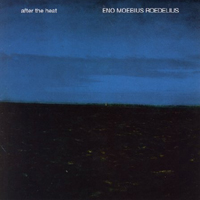
10. Eno, Moebius, Roedelius, After the Heat
While the U.S. was considering the discotheque, and the degree to which its sexuality would be called into question if it ventured inside, Europeans—who surely were to blame for disco in the first place—had long been off inventing something new to turn off Americans. And thus was born: “krautrock.” How could an offensive name like that not appeal to an American public still elated from its World War II victory?, German experimental musicians wondered—as they held down the “static/drone” button on their synthesizers for 14 minutes. A decade or so later, two former members of krautrock trio Cluster joined Brian Eno for this small, beautiful album with very little static or drone.
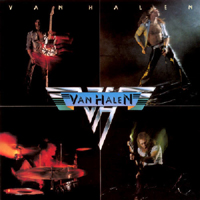
9. Van Halen, Van Halen
The Martians have landed, and they’re here to do our daughters—what else could parents have thought when Van Halen first arrived on the radar? Odd, then, that there’s always been something safe about the band. Even here on their first album, which is practically Spanish Fly; after all, it celebrates the juvenile myth of sex, but is hardly as suggestive as it is titillating. In effect, Van Halen was a sterilized Led Zeppelin, here to herald the imminent decade’s new, don’t-mess-up-my-hair sexuality. And so despite all the pomp and chest hair, the band itself wasn’t really that sexy a beast—and neither was the music. (The playing is technical, scientific, though original—you know an Eddie Van Halen guitar solo when you hear one.) Van Halen is further proof that enough scarves can solve any rock and roll problem.
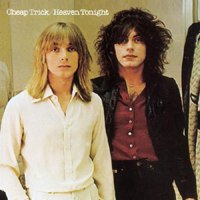
8. Cheap Trick, Heaven Tonight
You cried your heart out to Cheap Trick’s “The Flame” in 1988 when your girlfriend broke up with you to “The Flame” and then “The Flame” became her and her new boyfriend’s song. In short, “The Flame” is just about the worst song imaginable. Ten years later you’d see them play all of Heaven Tonight live, and you’d again appreciate how great the album that had come out 20 years earlier really was. And you’d leave before the encore, just in case they were going to play the song that set young hearts and maybe even an ex-girlfriend’s parents’ azalea bushes afire.
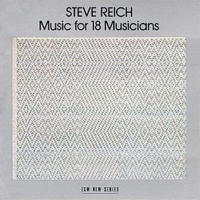
7. Steve Reich, Music for 18 Musicians
[mp3: “Music for 18 Musicians”] As part of the treaty that brought an end to the Stonewall Riots, the United States ceded control of New York City in 1969. Which goes some distance toward explaining how Steve Reich could explore so far beyond his homeland’s musical borders in Music for 18 Musicians, first performed in 1976 at Town Hall. The piece—56 minutes of pulsing, orchestral trance—is seems as infinite in duration as it does in influence. Listen and you’ll have to wonder where Tortoise would be without it. Well, probably still in Chicago—but without Music for 18 Musicians, we’d all basically be living in Shit Creek, U.S.A.
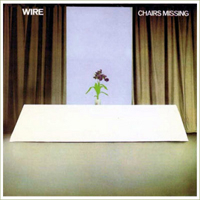
6. Wire, Chairs Missing
Before the internet, locating copies of albums that never saw U.S. distribution was something of a chore. Back then, if you’d read about a band in a list of one of your favorite band’s influences, and you wanted to locate that original band’s music, you really were in for it—and all for an album by a band you’d never even heard. So say you order one of their albums from your local record store, and when it finally comes in you actually go buy it, spending up to twice as much as you did on the album by the band that you actually 100-percent, for-sure like. And then you get the album home, and you wonder if maybe the other band had been kidding in the original article. How could anybody like this? This doesn’t sound anything like the other band you like, and the liner notes are no good to you because they’re in Japanese—and now you’re broke for the rest of the week. So, wallet emptied, nothing else you can do for the rest of the week, you listen to the album, then again, and again, and then the next week you spend all your money on another one by them, and the week after another, and then 10 years later some kid downloads all of them for free off the internet and says they sound awful and don’t waste your time. My advice: Sometimes it’s good to waste your time, and your money.
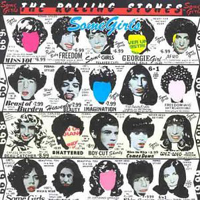
5. Rolling Stones, Some Girls
It’s long been a popular misdiagnosis that Some Girls is the sound of the Rolling Stones’ hijacking disco and applying their own classic rock riffs to it. But where are the disco strings? The freaky-deaky laser sounds? This ain’t no disco; if anything, the album’s standout tracks sound-check New York’s downtown sound—what would have been heard on stage at CBGB’s, not on the dancefloor at Studio 54. Questions of pilfering aside, the album is solid: its non-hits (“filler” seems too harsh) wouldn’t have been out of place on 1970’s Exile on Main Street, which to that point was the pinnacle of their recorded history. Some Girls was an unexpected moment of brilliance from a band that, at that point, had already been around for 16 years; to date, they’ve never bettered it.
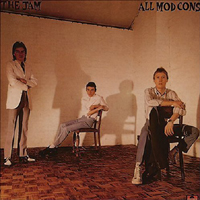
4. The Jam, All Mod Cons
British musicians can well appreciate the cross-Atlantic truth that U.S. audiences have little patience for songs that detail the doldrums of British life. Give us not your Wire, your Blur, your Ray and Dave Davies. Some artists got it, and sent over less Modern Life is Rubbish and more “Song 2”; they didn’t give us “Victoria” when “Lola” was available. But the Jam’s Paul Weller wouldn’t play along—that’s entertainment, I suppose—and so the band never really took off in the U.S., despite their massive success in their native Britain. But they were sharp, they were abrasive, and they had a rhythm section you could bounce a shilling off.
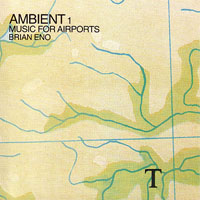
3. Brian Eno, Music for Airports
Whether the concept of ambient music really was that it should be sonic wallpaper, or whether the concept behind its emblematic album really was that it was meant to soothe nervous travelers—that’s beside the real point here, which is that Brian Eno’s early experiments with the music for which he coined the term “ambient” contain some of the most gorgeous, expansive sound recorded. Hypnotic and beatless, save for the percussiveness of piano and vibraphones, an airport may be the most appropriate place for listening to it, and occasionally dozing off. Which is why it’s not safe to listen to this while driving.
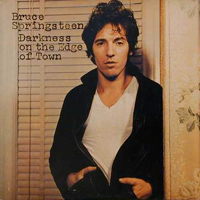
2. Bruce Springsteen, Darkness on the Edge of Town
Bruce Springsteen was so cool that he even sounded cool when listing car parts: “I got a ‘69 Chevy with a 396 / Fuelie heads / And a Hurst on the floor.” (Even if he got the engine type wrong, or if he didn’t, he still sounded cool.) But perhaps most importantly, he sounds cooler than any of us, because considering that it was 1978 when he sang those lyrics, extrapolate that to 2007 and you get “I got a ‘98 Chevy.” So: Do we only appreciate Springsteen through a contemporary lens? Would we have thought he was kind of a tool in 1978? If so, what kinds of tools, and do you think could he work a circular saw into some lyrics? Probably, probably, and probably—but that doesn’t mean it’s not good, it just means it gets better as it ages.
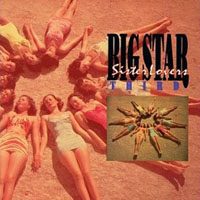
Album of the Year: Big Star, Third/Sister Lovers
Consider Brian Eno’s quip—he actually released three albums 1978, so why not give him another mention—that only a few people bought a Velvet Underground record, but that they all went on to form bands. The same is far truer for Alex Chilton’s Big Star, whose three studio albums even fewer people purchased, but whose influence effectively defines alternative rock from jangly R.E.M. to chilly 4AD Records to, well, now. Their final album, Third/Sister Lovers, is beautifully unnatural—a forced landscape, as opposed to untouched forest. They strangle ballads from their instruments, carelessly unleash rock riffs, kick in their drumheads.
But success was always, tragically, just out of reach, and Big Star disbanded following the Third sessions in 1974. Four years later the album was released, and in December of 1978 founding member Chris Bell (who had departed the band in 1972) died in a car accident. But no matter what might have, could have happened—if they hadn’t broken up, if they’d gotten old and lived and nobody cared anymore, if Chilton had gone all Graceland—their albums, and especially Third/Sister Lovers, transcended insider-cool musical obscurity, and were surely some of the finest pop music of all time, and certainly of 1978.
